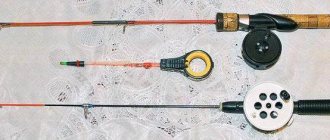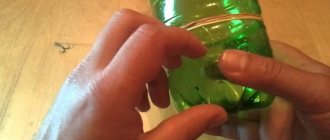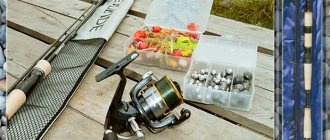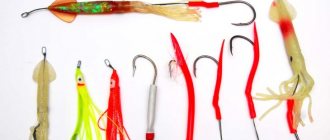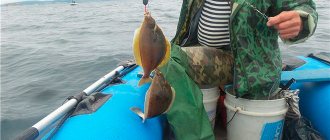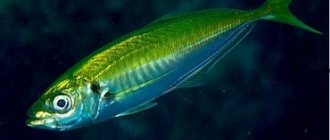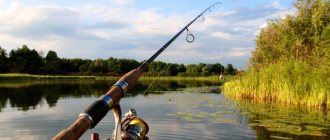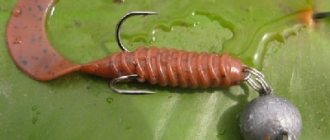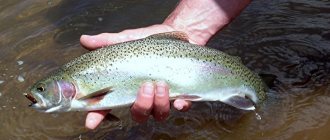Jig sea fishing differs significantly from a similar process in fishing in fresh water bodies (lakes, rivers, ponds). It is important to note that 90% of marine life are predators, so they can be caught with great success using artificial baits. You can fish from the shore, pier, or boat. Fishing among stones will be especially successful, provided there is depth.
Spinning for fishing and how to choose gear
So, let’s immediately note that today we offer a wide range of spinning rod models for sea jig fishing. It is important to understand that the choice of fishing rod should be made individually, taking into account the place chosen for fishing. So, if sea fishing takes place from a boat, then the need for long casts immediately disappears, so it is enough to have a spinning rod 1.7-2.1 meters long. You need to select a spinning rod with greater responsibility if you plan to fish from the shore, since you will need to cast bait over a distance of 100 meters or more. You can only cast that far using a 3-4 meter long rod. In addition, when choosing, you need to pay attention to the quality of the guide rings, the mounting of the reel and the convenience of the handle. Regarding the latter, it is recommended to consider models whose handles are made of cork.
When choosing a spinning rod, you need to pay attention to the test. In this case, the choice depends on the weight of the jig head, which will most often be used when fishing. Now a few words about what kind of fish you can catch with a jig in the Black Sea. So, if you prepare properly, you can safely count on catching bison, croaker, scorpionfish, as well as mackerel, horse mackerel, bluefish, and rock perch. Note that sea fishing is best done in the evening hours, namely closer to sunset and several hours after complete darkness. The bite is especially good on the beach, where vacationers were actively swimming during the day.
How to fish with a jig
As a result of many years of practice in cultivating this method of catching predators, a certain technique and methods of jig fishing have developed. The use of one method or another depends on the structural conditions of the reservoir and the activity of the fish being caught. We will continue our conversation about the main and most popular methods.
Stepped classic Russian wiring
The method is suitable for various types of reservoirs. After casting and the bait reaching the bottom, the fisherman begins to make two or three turns with the reel, thereby lifting the bait from the bottom and moving it through the water along a stepped trajectory. After a cycle of a series of revolutions, the load is allowed to fall to the bottom, and after a pause of a couple of seconds, the cycle is continued, thus bringing the nozzle to the shore or boat.
Important! If you watch the tip of the rod, then touching the bottom with the bait is marked by its full straightening. The step itself bends the quivertip.
American wiring
This technique is similar to Russian wiring based on the principle of a stepped trajectory of the simulator, only the step is carried out by pulling the bait using the tip of the rod, and not by working with a reel. After several pulls of 20-30 cm, the loosened cord is reeled out and selected, followed by the next rhythmic work with the rod. The method is more labor-intensive than the previous one, but effective in controlling weak bites that occur during pauses.
Wiring for demolition
This is one of the effective methods of jigging in the current. The bait is fed under the drift of the current, starting its animation by waving the rod. At the moment of the swing, the bait is separated from the bottom of the reservoir and is transferred by current forces to another point. The wiring is carried out until the cord is loosened, after which it is reeled in and the spinning rod continues to swing or the equipment is recast again.
Aggressive wiring
Aggressive wiring is used for hunting active pike. The method involves feeding the bait to the bottom, after which, by lifting the rod up, a sharp toss of the bait is made, followed by a pause, at which time the silicone falls back to the bottom. Then, the angler lowers the rod, returning its blank to a horizontal position and rewinds the slack cord.
Uniform wiring
Uniform wiring is carried out by direct winding of the cord after the bait is supplied to the fishing zone. The reel is wound at the same speed, without pauses or any movements with the rod. Silicone with its own play is used as a nozzle. It is possible to catch pike, perch and catfish using the presented technique.
Pendulum wiring
This technique is effective in fishing areas with a snag bottom. With the technology, it is important to position the boat correctly in relation to the trajectory of the nozzle, which reduces the likelihood of snags. The load supplied to the fishing point is placed on the bottom, after which a single and smooth short pull is made with the rod 15-20 cm up, followed by lowering the quiver tip by 5-10 cm and simultaneously winding the loose cord. Repeat cycles are done without stopping.
Short stepped wiring
Short stepped wiring is similar to the Russian type of baiting. The differences in the methods are in a shorter step, which is achieved only by a single revolution of the coil, but performed in a more frequent rhythm. Passive fish are caught using this method. The method works for pike, perch and pike perch.
Choosing a reel for jig fishing at sea
So, for fishing using this method, a multiplier is perfect, but experienced fishermen advise using regular spinning reels with a front drag. When choosing, special attention should be paid to the weight of the product, as well as the quality and size of the spool, on which 200-250 meters of fishing line with a cross-section of 0.25 mm or braided cord with a diameter of 0.1 mm should freely lie. It is important to know that the selected model must meet the following requirements:
- High quality of the line layer under conditions of high operational load;
- Increased resistance to the negative effects of sea water;
- Increased reliability and high quality of external and especially internal mechanisms.
IMPORTANT! It is necessary to choose a reel model that will be used for sea fishing among the modifications that are designed for sea fishing
Having selected a reel, you will need fishing line; when choosing this element, you should not save, it is important to purchase products of the highest possible quality. The spool can be wound with both regular monofilament line and braided cord. However, we note that the disadvantage of the fishing line is stretching, which reduces the sensitivity of the gear, especially if the bite occurs at a distance of 50-70 meters. As for the braided cord, its main advantage is a large breaking load with a small diameter.

Posting a jig bait
If you think that jig wiring is monotonous, then you are a little mistaken. The number of revolutions, reeling speed, height and sharpness of the jig bait’s separation from the bottom should constantly change. For example, you are fishing in a place with complex and varied terrain: on release, the bait falls on a dump on the opposite bank, then there is a channel ditch, then a slight rise and a coastal ditch. In such cases, it is recommended to do a large amount in small places.
turns the reel handle at high speed, but it’s better to do it differently. Do not spin the reel at breakneck speed, but make no more than three leisurely turns of the reel. This is necessary in order not to miss the fall into depth. If we make 5-6 revolutions at a fast pace, we will simply miss it. Further, the jig bait begins to fall from the dump. This can be clearly felt by the sharp increase in the time the jig falls to the bottom. At this moment, it is better not to make sudden movements with the bait, reduce the number of revolutions to 1-2 and during a pause, release the line using a spinning rod, tilting it towards the water. But the line must nevertheless remain constantly taut, since a fish bite is most likely at this time. Why do you need to lower the tip of the spinning rod to the water? The answers to this question are quite simple: the jig bait falls along a more vertical trajectory, and changes in relief are determined best this way.
Next begins a section with a fairly uniform depth, where the rotation speed of the coil can be increased. Then, we begin to feel the increased resistance of the retrieve - this means that the jig has come close to the edge - here it is better to speed up the pace and raise the spinning rod as high as possible in order to prevent snagging. Bites at this stage of wiring also happen quite often, but at a time when the predator is highly active. Although there are exceptions. So, we raised the jig to the underwater hump, now we should slow down the speed again and reduce the step of the stepped retrieve. Pike bites are most likely in the coastal ditch. In this place, the jig bait should be cast very slowly; the reel should make no more than two turns. When approaching the coastal drop, the speed of the retrieve must be kept quite slow. Only when we begin to feel that the bait has been dragged to the dump can we begin to reel it in.
Features of choosing bait for jig fishing
So, let’s immediately note that sea fishing can take place using various types of bait. If desired, you can purchase jig heads with different loading positions. If you choose options in which the load is in the middle, then after casting the bait begins to slowly fall, creating additional vibrations that attract a predator. Today, silicone jig baits are offered in various designs, you can purchase:
- worms
- vibrotails
- twisters
- octopuses
Each of the options is offered in different sizes, shapes, and colors, which allows you to choose the option that best suits your specific fishing conditions. Note that after casting, at the moment of immersion, baits for sea jig fishing, due to their shape, are capable of performing not only oscillations, but also sharp slopes to the side, which exactly emulates the behavior of a wounded, frightened fish. Retrieving is carried out intensively: after casting there is a short pause, after which a sharp jerk is performed with simultaneous reeling of the line. Please note that during the wiring process, loosening of the fishing line is not allowed. Jig sea fishing can be carried out in the upper, middle layers using baits with different loading placements, body shapes and sizes, and based on this, the wiring technique is selected.
Selection of jig heads
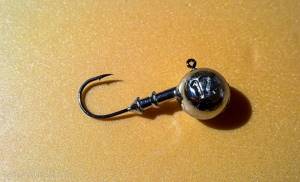
The peculiarities of jig fishing with silicone and foam types of baits imply the use of specialized weights, which are performed in combination with a hook, a stationary jig head, and independent separate types of weights, nicknamed Cheburashkas among spinning fishermen. Using these types of weights, spaced-apart, like mounting with a branch lead, and combined equipment are assembled. The shape of the weight itself can be voluminous, in the form of a ball is considered classic, or flat, the so-called boot shape. Differences in the use of forms depend on the conditions of the reservoir and, in particular, the state of its bottom.
Important! Flat loads have greater maneuverability in thickets and low grip when working with installations in snags and branches of trees that have fallen into the water. It is more convenient to fish with bulk loads in deep areas of water areas, since such forms reach the bottom faster.
The combined load restricts the movement of baits. Cheburashka promotes greater freedom of movement of the hooks without affecting the play of the simulator hook mounted on the fore-end.
Important! The weight of the load is selected depending on the depth of the reservoir. The greater the depth, the higher the mass of the load.
After all, the main purpose of the cargo is to deliver the bait to the bottom of the reservoir being fished by a spinning rod as quickly as possible.
Effective baits
It's no secret that bait is an essential attribute of successful fishing. An ill-chosen bait for fishing can cause a poor catch.
Among the most effective baits for sea fishing are the following: • Mussels - live on rocks in the coastal zone. They are the most common bait for catching goby and other types of fish.
Mussels are used both fresh and dried. It is enough to attach the mussel to the hook and scatter the excess meat around the fishing spot.
• Sea worms – also live in the coastal zone or in estuaries (in muddy soil). They are a universal bait that is suitable for any type of fish.
For small fish, worms are incubated on the hook in pieces, for large fish - whole. Note.
Dead worms decompose and become gelatinous. In this form they are not suitable for fishing.
In order to preserve the bait, the worms must be placed in a jar with water, algae, or silt. Even in properly created conditions, worms live no more than two days.
• Shrimp are one of the most commonly used baits. Shrimp can be found along the entire coast; they are caught using specialized traps.
Shrimp are attached to the hook in different forms: fresh, boiled or dried (the hook must be inserted from the tail, pulling it over the head). • Crabs - found in the coastal zone near the stones.
Suitable for catching flounder, mullet, sea bass. To hook crabs, it is recommended to use sharp hooks with a long shank.
And here's what you need to know: Marine Jig Heads Sale - Discounted Items on AliExpress
Thus, Black Sea fishing is a good solution for those who want to combine relaxation on the seashore and practicing their favorite hobby. The variety of fish will impress even experienced fishermen, and a competent selection of bait and tackle will allow you to take away a large catch.
The following baits are used for jigging:
- Silicone;
- Foam;
- Oscillating spinners.
Silicone baits
There are other types of baits, for example, wobblers, spinners, but they are not used in jig wiring due to the specific instructions. Rotating spoons work well with even wiring, and wobblers are mostly used depending on specific fishing conditions.
